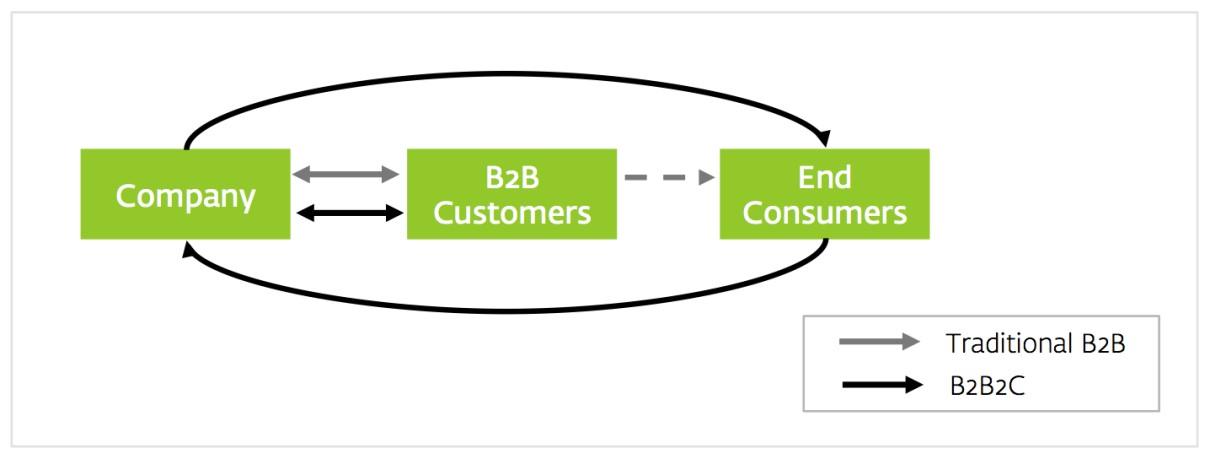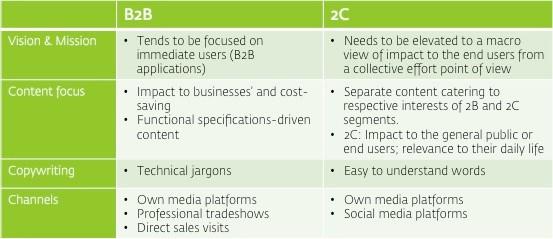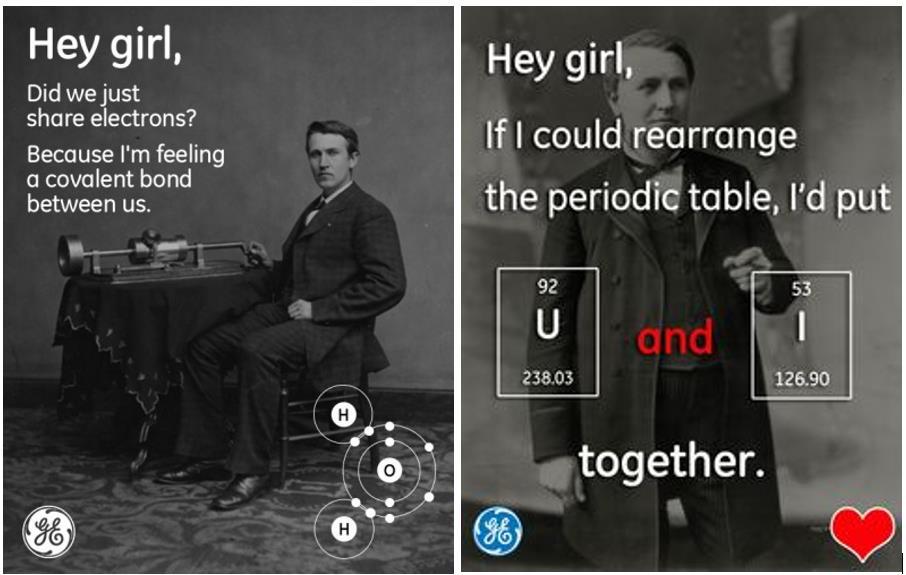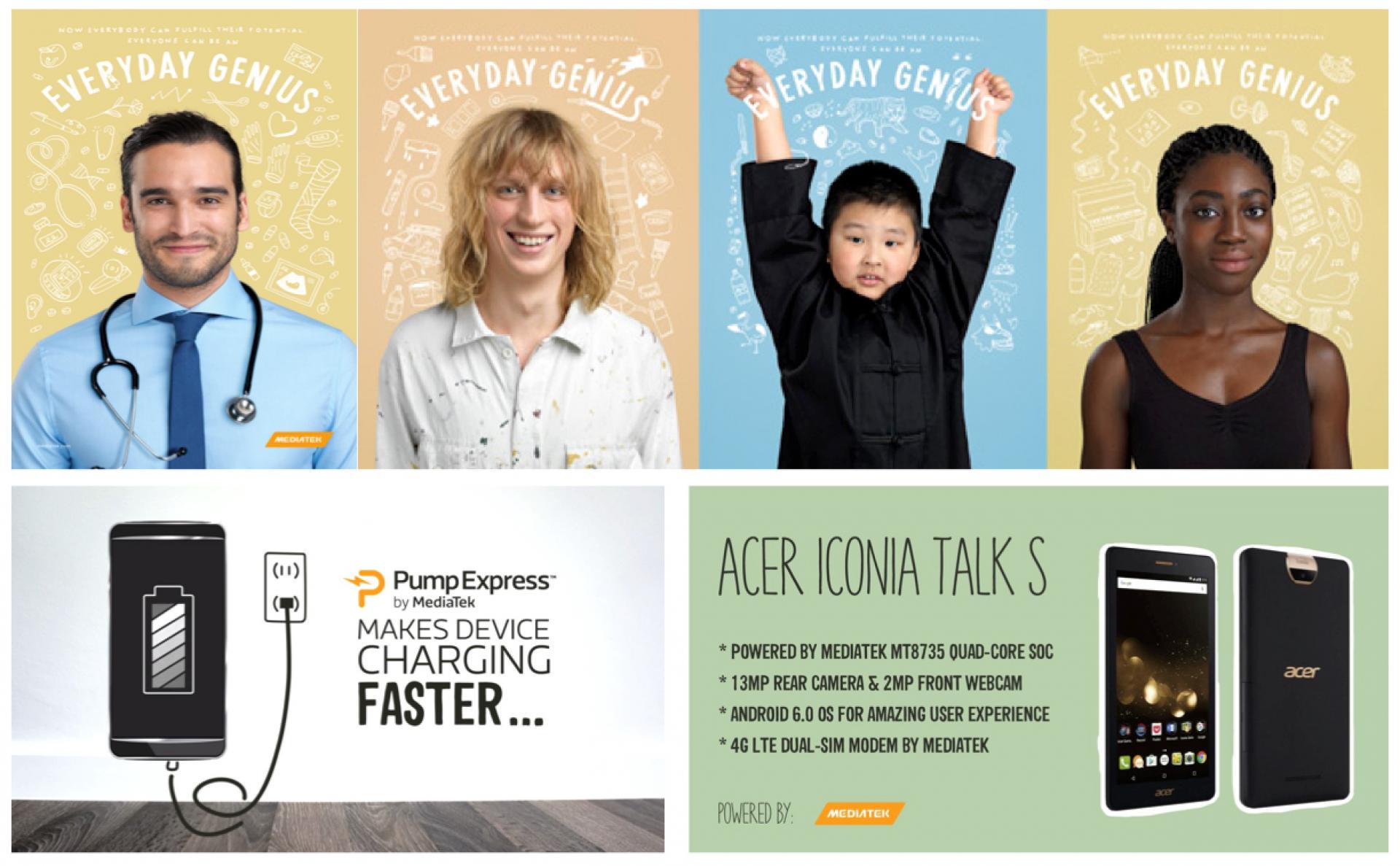

Business to business communication models are changing. In a space that has historically relied on product specs, technical jargon and raw data to drive sales, many B2B brands are discovering the hidden opportunity of branding towards the end-user. Sometimes called “B2B2C Branding”, it leverages people-friendly techniques to build brand awareness, connect with the end consumer, and increase bottom lines by boosting sales of distributors.
In this article, we will explore a bit what is B2B2C branding, why it’s important, and how to make the most of it.
The importance of B2C branding has long been touted: no. 1 advertiser globally P&G for example spent $8.3bn on advertising in 2016 even though it is going through a period of restructuring towards leaner operations. But many in B2B businesses often struggle with the following misconceptions:
It’s time to correct all these misconceptions in branding for B2B businesses.
B2B businesses impact end consumers more prevalently than we can imagine. Consider the following: have you noticed the brand of the processor chips used in your laptop or mobile devices? Do you remember the sound system used in the cinema? How about the brand of zipper on your favorite outfit? Have you wondered how Singapore gained its reputation for being a clean, orderly and efficient country for tourists while travel guides mostly mention just shopping, food and multicultural elements? No matter which industry you hail from, the product or service you offer brings a big impact to the world. From the Intel chip in your laptop to the tires on your car, B2B brands exist everywhere in all consumers’ lives.
End-consumers may seem invisible at times because they are not the direct purchasers of your brand. However, they are the ones consuming your brand. By reaching out to end consumers, the influence your brand has over time will indirectly create a demand for your brand, thus increasing your bottom-line. In other words, if you don’t keep the end consumer in mind, they have no reason to use your distributors over another, and your product becomes replaceable.
Rehau, a polymer processing company, has started reaching out to end consumers following research insights gathered in China market. Rehau traditionally has worked directly with architects and interiors designers to incorporate their products into projects in the construction sector. Through B2B and B2C market research conducted by Labbrand, we identified that end consumers can play a vital role in architects and interior designers’ decision-making process. While these home owners are willing to spend on better quality materials and products for their living environment, they often lack the knowledge to do so.
As such, Rehau started to reach out to these end consumers. Other than including their applications in the consumers’ daily life in the corporate video, Rehau has also included an educational section within its Chinese website for home owners. As homeowners may lack the knowledge in material selection, Rehau cleverly taught these consumers with simple terms so they would understand the need to spend on quality. These strategies empowered end consumers with vital information in material selection and determined how their interior designer/architect selected the right brand for their home. This is a great example of how a B2B brand can forge a connection with the end consumer to increase demand.

Besides the bottom-line, direct engagement with end consumers can benefit your brand in other ways:
While subtle at times, investment in B2B branding and communications can define the difference between a “commodity” and “brand”. The results, usually not immediately, help to form a “halo” around your brand and create a pull-demand, ultimately leading to returns in the form of higher sales.
No matter your business ecosystem, you are capable of taking brand actions: these actions take into account brand positioning, cultural indicators, macro trends and more. While B2B brands tend to focus on improving business efficiency. “B2B2C” branding combines the accuracy and data from B2B branding with the approachability and intrigue from B2C.
This means breaking the norm of reaching just your immediate customers. Think big. Expand your reach to everyday end-consumers who will be impacted by your offerings, and showcase how this affects the way you serve your immediate customers.

The table below highlights the changes that a B2B brand needs to make in its extension towards focusing on the end user. As mentioned earlier, B2B firms tend to target immediate users, its branding content is usually functional and specifications-driven. Thus the copywriting for branding collaterals is filled with technical jargons. This makes it difficult to understand for most people. On the contrary, B2B2C branding leverage on separate content strategies, catering to the varying interests of the commercial and consumer segments.

The content of B2C branding is about how the brand is relevant to the consumer’s daily lives. This is where social media platforms can be leveraged to reach out to the end consumers. GE’s #GEInstaWalk is an example of how a traditionally B2B business is able to leverage on social media platform to offer everyone a real-time tour inside GE’s most cutting-edge facilities, as seen through the eyes of Instagram’s best photographers and avid fans of GE technology. GE’s “Hey Girl” Pinterest board is another great example of how science and technology gets integrated into everyday relationships.

Many renowned brands including General Electric, IBM, BASF, SAP, Qualcomm and MediaTek have taken the B2B2C branding path and focused on the benefits for the end consumer. Below, we will look into a short case study of how MediaTek, a micro-processor chip company has extended its reach and realized increased profitability as a result.
Electrical components are often overlooked because they are part of the many components in the finished product and unseen by the end-consumers. Intel is one producer of core processors you might be familiar with. Similarly, MediaTek a micro-processor chip company elevated the status of its team and its microchips. They emphasized how technology was enabled by their microchips which are helping everyday folks achieve milestones with their “Everyday Genius” concept.
The “Everyday Genius” campaign had an aim to raise global awareness for MediaTek and focus on MediaTek’s vision that technology enables the making of many “geniuses”. Consequently, it has pioneered a range of cutting edge technologies whilst making it affordable so users from all walks of life can enjoy the use of the technology and be “geniuses in their everyday life”. The visuals used in the campaign refreshingly communicate the “Everyday Genius” idea through the use of multi-ethnic personas in different occupations and simple graphic videos that provides a walkthrough of how microchips are being used every day.
Strategic co-branding with end device brands is another tactic employed, and an important one. MediaTek’s strategic alliance with smartphone brands such as Micromax has also effectively brought its presence out to end consumers. Because of MediaTek’s increased visibility, end consumers can be confident in their purchase decisions in the competitive industry of smartphones.
Against a challenging climate, MediaTek’s most recent quarterly performance has seen an increase in profits of 8%. While it is still premature to assess the results of the campaign, MediaTek’s global profile has definitely been raised as it continues to power on its alliances with big technology brands such as Verizon Wireless, Ericsson and ASUS.

MediaTek is just one example of the many B2B brands focusing more on the end user, and delivering more emotional, connective, and relevant branding campaigns – IBM’s Watson being a notable one. If industry leaders (and increased bottom lines) are any indication, we’re likely to see more of this style branding in the future.
A Labbrand Group Company © 2005-2024 Labbrand All rights reserved
沪ICP备17001253号-3* Will be used in accordance with our Privacy Policy
To improve your experience, we use cookies to provide social media features, offer you content that targets your particular interests, and analyse the performance of our advertising campaigns. By clicking on “Accept” you consent to all cookies. You also have the option to click “Reject” to limit the use of certain types of cookies. Please be aware that rejecting cookies may affect your website browsing experience and limit the use of some personalised features.